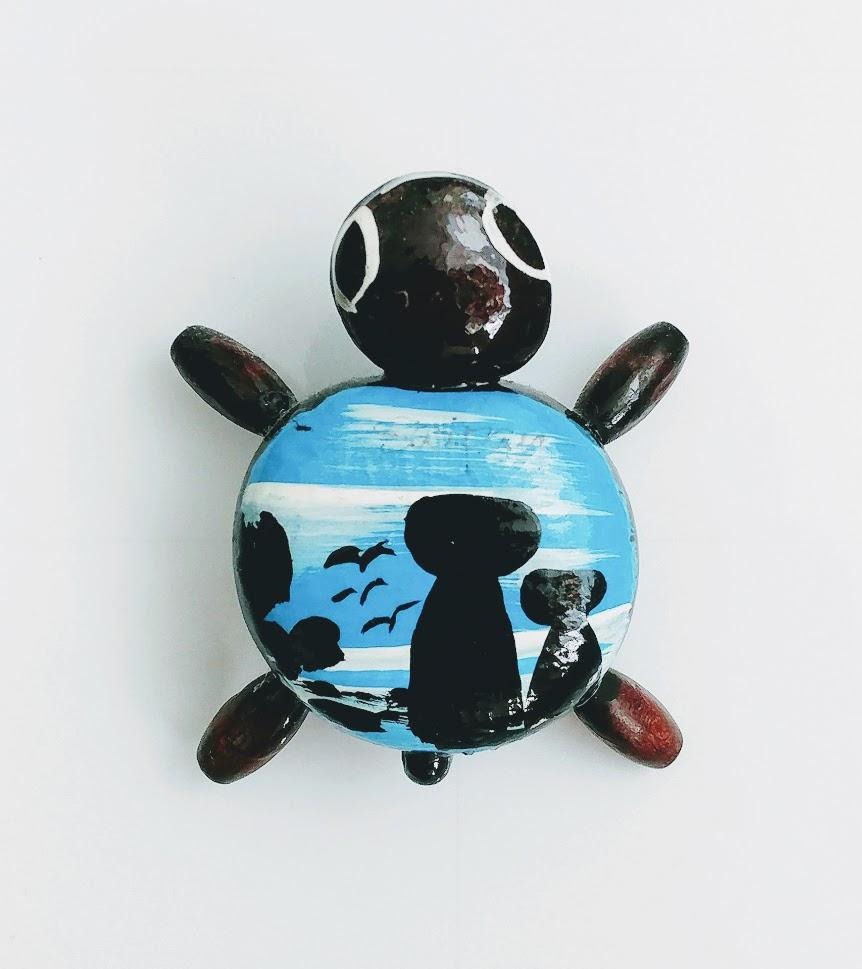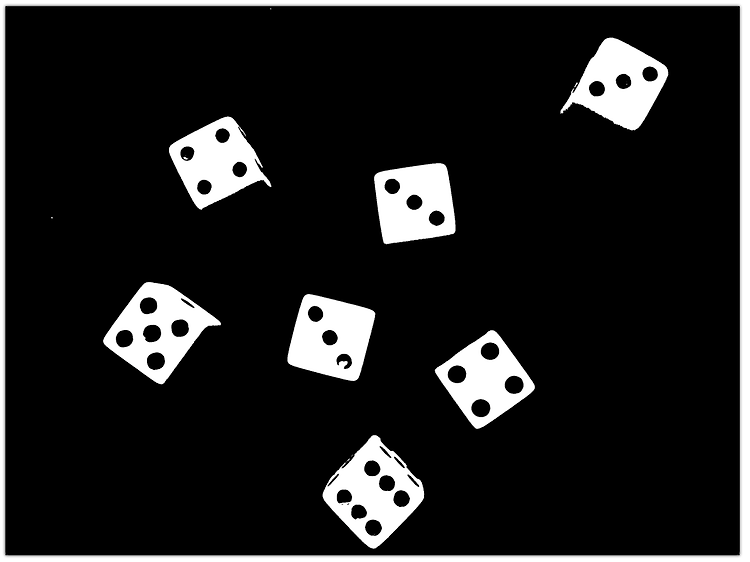

주사위 눈 개수 세는 OpenCV Python 예제 - 웹캡 영상 사용OpenCV/OpenCV 강좌2023. 10. 20. 07:14
Table of Contents
반응형
다음 포스트에 있는 주사위 눈 개수 세는 OpenCV Python 예제를 웹캠 영상에서 테스트해본 결과입니다.
주사위 눈 개수 세는 OpenCV Python 예제
https://webnautes.tistory.com/2107
2023. 5. 29 최초작성
테스트 결과입니다.

사용한 전체 소스코드입니다.
| import cv2 import numpy as np def lab_equalizer(img, new_channel): lab = cv2.cvtColor(img, cv2.COLOR_BGR2LAB) l,a,b = cv2.split(lab) merged_lab = cv2.merge((new_channel,a,b)) bgr_img = cv2.cvtColor(merged_lab, cv2.COLOR_LAB2BGR) return bgr_img cap = cv2.VideoCapture(0) while True: ret, image = cap.read() if ret == False: break image_copy = image.copy() gray = cv2.cvtColor(image_copy, cv2.COLOR_BGR2GRAY) clahe = cv2.createCLAHE(clipLimit=2.0, tileGridSize=(8,8)) clahe_applied_perceived_channel = clahe.apply(gray) lab_equalized_img = lab_equalizer(image_copy, clahe_applied_perceived_channel) # 컨투어 검출하기 gray = cv2.cvtColor(lab_equalized_img, cv2.COLOR_BGR2GRAY) t, binary = cv2.threshold(gray, -1, 255, cv2.THRESH_BINARY_INV | cv2.THRESH_OTSU) contours, hierarchy = cv2.findContours(binary, cv2.RETR_TREE, cv2.CHAIN_APPROX_SIMPLE) dict_i = {} # 주사위를 검출한 컨투어를 찾습니다. for i, (c,h) in enumerate(zip(contours,hierarchy[0])): rect = cv2.minAreaRect(c) box = cv2.boxPoints(rect) box = np.intp(box) p1 = box[0] p2 = box[1] p3 = box[2] dist1 = np.linalg.norm(p1-p2) dist2 = np.linalg.norm(p2-p3) if dist2 == 0: dist2 = 0.000001 if dist1/dist2 > 0.6 and dist1/dist2 < 1.5: if h[3] == -1: dict_i[i] = [] # 주사위 눈을 검출한 컨투어를 찾습니다. total_pips = [] for i, (c,h) in enumerate(zip(contours,hierarchy[0])): if h[3] in dict_i.keys(): rect = cv2.minAreaRect(c) box = cv2.boxPoints(rect) box = np.intp(box) area = cv2.contourArea(c) p1 = box[0] p2 = box[1] p3 = box[2] dist1 = np.linalg.norm(p1-p2) dist2 = np.linalg.norm(p2-p3) if dist2 == 0: dist2 = 0.000001 print(i, dist1*dist2, area) if dist1/dist2 > 0.6 and dist1/dist2 < 1.5 and 100 < area: dict_i[h[3]].append(i) total_pips.append(i) list_del = [] for key in dict_i.keys(): if len(dict_i[key]) == 0: list_del.append(key) for del_item in list_del: del dict_i[del_item] print('주사위 목록') print(dict_i) for index, (c,h) in enumerate(zip(contours,hierarchy[0])): rect = cv2.minAreaRect(c) box = cv2.boxPoints(rect) box = np.intp(box) x, y, _, _ = cv2.boundingRect(c) # 주사위 눈 리스트 생성 list_item = [] for i in dict_i.values(): list_item = list_item + i if index in dict_i.keys() or index in list_item: # 주사위와 주사위 눈을 그려줌 cv2.drawContours(image_copy, [box], 0, (255, 0, 150), 3) # 주사위 눈 개수 출력 if index in dict_i and len(dict_i[index]) > 0: cv2.putText(image_copy, str(len(dict_i[index])), (x+100, y-5), cv2.FONT_HERSHEY_SIMPLEX, 2, (0, 0, 255), 2, cv2.LINE_AA) # 컨투어 인덱스 출력 cv2.putText(image_copy, str(index), (x+20, y-5), cv2.FONT_HERSHEY_SIMPLEX, 1, (200, 140, 140), 1, cv2.LINE_AA) # 전체 주사위 눈 개수 출력 cv2.putText(image_copy, f'total = {len(total_pips)}', (50,50), cv2.FONT_HERSHEY_SIMPLEX, 2, (0, 0, 255), 2, cv2.LINE_AA) # binary = cv2.resize(binary, None, fx=0.5, fy=0.5) # image_copy = cv2.resize(image_copy, None, fx=0.5, fy=0.5) cv2.imshow('binary', binary) cv2.imshow('result', image_copy) key = cv2.waitKey(1) if key == 27: break |
다음 링크를 참고했습니다.
https://stackoverflow.com/questions/24341114/simple-illumination-correction-in-images-opencv-c
반응형
'OpenCV > OpenCV 강좌' 카테고리의 다른 글
| Homography matrix를 이용한 planar rectification - OpenCV Python 예제 (0) | 2023.10.20 |
|---|---|
| Homography matrix를 이용한 planar rectification를 구현 예제 (0) | 2023.10.20 |
| 주사위 눈 개수 세는 OpenCV Python 예제 (0) | 2023.10.20 |
| OpenCV Python 알파 블렌딩 : 이미지 투명하게 만들어 합치기 (0) | 2023.10.20 |
| 두 직선 사이의 각도 구하는 OpenCV Python 예제 (0) | 2023.10.18 |





